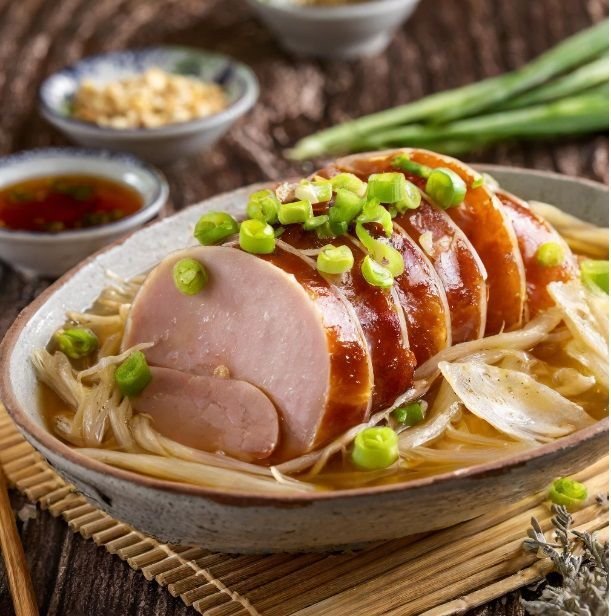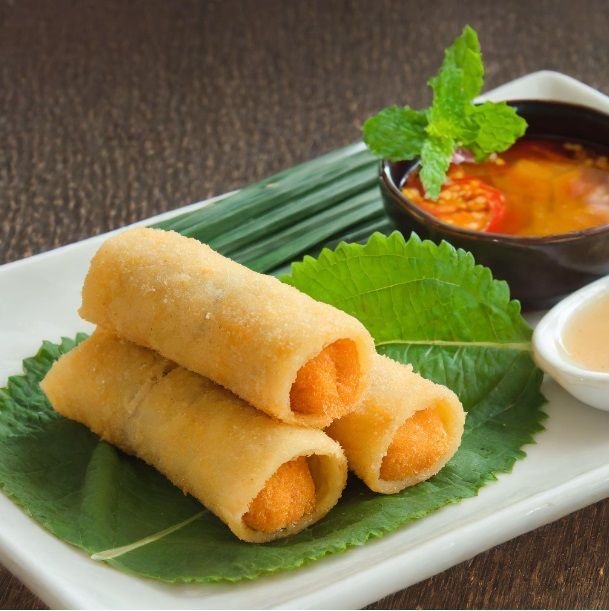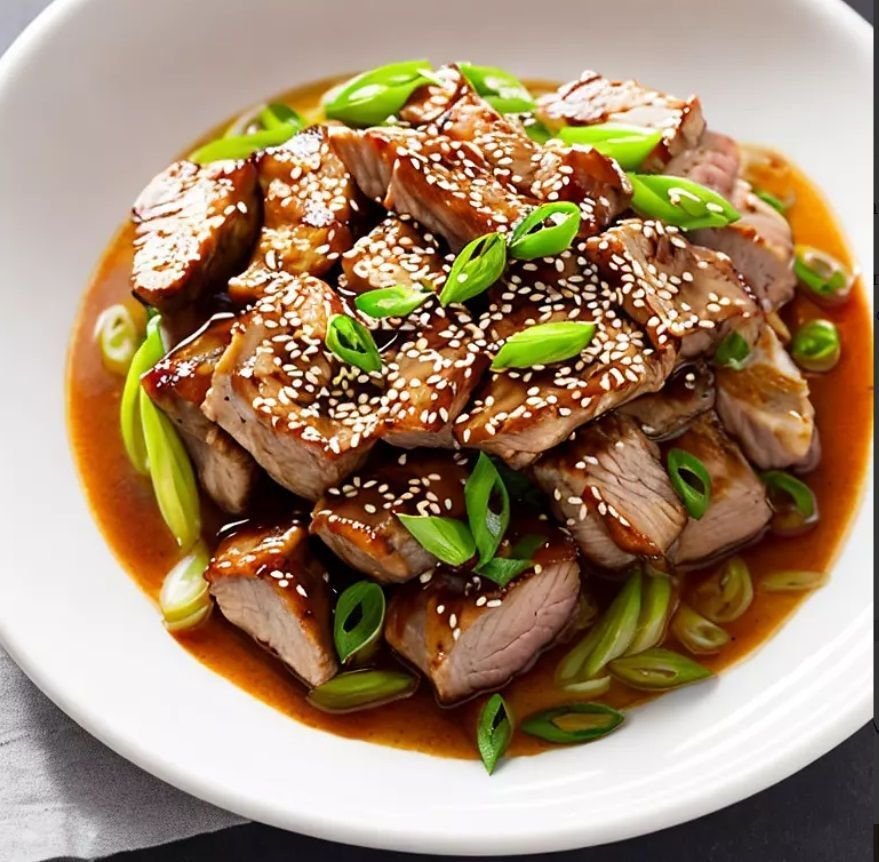Shanghai ham
Shanghai ham from East China
Chinese food and chinese recipes.
Exploring the Savory Delights of Shanghai Ham
Shanghai, a bustling metropolis in East China, is not only renowned for its towering skyscrapers and vibrant culture but also for its rich culinary heritage. Among the many culinary delights that originate from this region, this recipe stands out as a beloved delicacy cherished by locals and revered by food enthusiasts worldwide.
In this article, we delve into the origins, preparation, and cultural significance of this recipe, offering readers a comprehensive insight into this iconic Chinese dish.
Shanghai ham, or Huo Tui (火腿) in Mandarin, is a beloved delicacy with a rich history and exquisite flavor. This authentic recipe will guide you through the process of creating your own recipe at home, allowing you to experience the traditional flavors of this part of China in the comfort of your kitchen.
Ingredients:
- 1 whole pork hind leg (approximately 10-12 pounds)
- 2 cups salt
- 1 cup granulated sugar
- 2 tablespoons Sichuan peppercorns
- 2 tablespoons whole cloves
- 1 tablespoon fennel seeds
- 1 tablespoon star anise
- 1 cinnamon stick
- 2 bay leaves
- 1 cup Chinese rice wine or Shaoxing wine (optional)
- Cheesecloth
- Butcher’s twine
Instructions:
- Prepare the Brine:
- In a large pot, combine the salt, sugar, Sichuan peppercorns, cloves, fennel seeds, star anise, cinnamon stick, and bay leaves.
- Add enough water to cover the pork hind leg completely.
- Bring the brine to a boil over medium heat, stirring occasionally until the salt and sugar are fully dissolved.
- Remove the pot from heat and allow the brine to cool to room temperature.
- Prepare the Pork Hind Leg:
- Rinse the pork hind leg under cold running water and pat it dry with paper towels.
- Using a sharp knife, trim any excess fat from the surface of the pork leg.
- Submerge the Pork Leg in Brine:
- Place the pork hind leg in a large container or pot.
- Pour the cooled brine over the pork leg, ensuring it is fully submerged.
- Cover the container and refrigerate for 7-10 days, allowing the pork leg to cure.
- Air-Dry the Cured Pork:
- After the curing period, remove the pork hind leg from the brine and rinse it thoroughly under cold water.
- Pat the pork leg dry with paper towels and wrap it tightly in several layers of cheesecloth.
- Secure the cheesecloth-wrapped pork leg with butcher’s twine, creating a neat package.
- Hang the wrapped pork leg in a cool, dry place with good air circulation for 2-3 weeks, allowing it to air-dry completely.
- Slice and Serve:
- Once the pork leg is fully air-dried, unwrap it from the cheesecloth and discard any excess mold that may have formed on the surface (a natural byproduct of the curing process).
- Using a sharp knife, thinly slice the Shanghai ham and serve it as desired.
- Shanghai ham can be enjoyed on its own as a flavorful appetizer, or incorporated into various dishes such as soups, stir-fries, and salads.
- Storage:
- Store any leftover Shanghai ham in an airtight container or vacuum-sealed bag in the refrigerator for up to several weeks. Alternatively, you can freeze sliced portions of Shanghai ham for long-term storage.
Enjoy the savory delights of your homemade recipe, and savor the authentic flavors of East China with every bite!

Curing Process: The hallmark of this recipe lies in its meticulous curing process, which imbues the meat with a distinctive flavor and texture. Traditionally, the process begins with selecting high-quality pork hind legs, prized for their tender meat and optimal fat content. The legs are carefully trimmed, cleaned, and then submerged in a brine solution comprising salt, sugar, spices, and sometimes alcohol for added flavor.
Once immersed in the brine, the pork legs undergo a curing period that can last several weeks to months, depending on the desired intensity of flavor. Throughout this time, the meat absorbs the flavors of the brine while the curing agents work their magic, preserving the meat and enhancing its taste profile.
After the curing process is complete, the pork legs are meticulously air-dried to further concentrate the flavors and achieve the desired texture. This step is crucial in developing the signature aroma and tenderness that this recipe is renowned for.
Preparation and Serving: this recipe can be enjoyed in various culinary applications, ranging from soups and stir-fries to appetizers and main courses. One popular method of serving this dish is to thinly slice it and pair it with other ingredients such as bamboo shoots, mushrooms, and tofu in a flavorful broth, creating a hearty and comforting soup known as “Shanghai Ham Soup.”
Another classic dish featuring recipe or dish is “Stir-Fried Shanghai Ham with Vegetables,” where the cured meat is stir-fried with an assortment of fresh vegetables and aromatic seasonings, resulting in a savory and satisfying dish bursting with flavor.
Cultural Influence: Beyond its culinary appeal, this dish holds significant cultural symbolism in Chinese cuisine. In traditional Chinese culture, cured meats like this dish are often associated with prosperity, longevity, and auspiciousness, making them popular choices for celebratory occasions such as weddings, festivals, and family gatherings.
Moreover, this dish serves as a testament to the ingenuity and craftsmanship of Chinese culinary artisans, who have perfected the art of curing meats over generations. Its enduring popularity both within China and beyond underscores the universal appeal of Chinese cuisine and its ability to captivate palates worldwide.
In summary, this dish stands as a culinary masterpiece that embodies the rich gastronomic heritage of East China.
From its humble origins as an imperial tribute to its status as a beloved delicacy enjoyed by millions, this dish continues to captivate food enthusiasts with its exquisite flavor, meticulous preparation, and cultural significance.
Whether savored in a steaming bowl of soup or sizzling in a stir-fry, the allure of Shanghai ham remains undeniable, inviting diners on a tantalizing journey through the vibrant flavors of East China.

What is Shaoxing wine
This wine, also known as Shaoxing rice wine or simply Shaoxing, is a traditional Chinese rice wine that originates from the region of Shaoxing in Zhejiang Province, China. It holds a significant place in Chinese cuisine and culinary traditions, valued for its unique flavor and aroma.
This wine is made from fermented glutinous rice, water, and a small amount of wheat flour or barley. The production process involves steaming the rice, mixing it with yeast and fermenting agents, and allowing it to ferment in earthenware jars for an extended period, typically several months to years.
The fermentation process gives this wine its distinctive taste, which is often described as rich, nutty, and slightly sweet, with hints of umami.
In Chinese cooking, this wine is used as a key ingredient in marinades, sauces, braises, and stir-fries, adding depth of flavor and complexity to dishes. It is particularly popular in recipes featuring meat, seafood, and poultry, where it helps tenderize proteins and enhance overall taste.
This wine comes in various grades, ranging from inexpensive cooking varieties to premium aged versions prized for their exceptional quality and flavor. It is also available in both traditional and modern packaging, including bottles, ceramic jars, and vacuum-sealed bags.
Due to its cultural significance and culinary versatility, this wine is a staple ingredient in many Chinese households and professional kitchens, playing a vital role in the creation of authentic Chinese cuisine.



